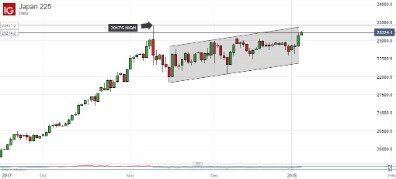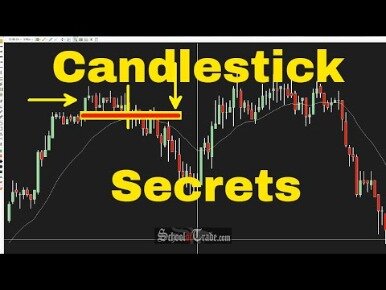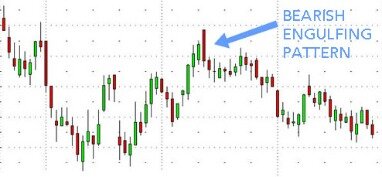Contents:


A referral to a stock or commodity is not an indication to buy or sell that stock or commodity. The bullish divergence occurs when the RSI is showing flat or lower lows while the Composite Index shows higher lows. Bullish divergence warns us that the downside pressure could end very quickly. The volume is, technically, higher than the past 20-period average and higher than the prior candlestick, but we can see it fall from then on. Volume should be higher than the prior candlestick and is ideally 2x the 20-period volume average. For this article, I will only be discussing the bullish side of the patterns.

We could make a buy trade after the instrument consolidated above the resistance. The price movements are equal to the height of the side channel between the support and resistance lines. Cory is an expert on stock, forex and futures price action trading strategies. A price pattern that signals a change in the prevailing trend is known as a reversal pattern. These patterns signify periods where the bulls or the bears have run out of steam.
Expanding Wedge – profitable Forex pattern
Stock chart patterns are lines and shapes drawn onto price charts in order to help predict forthcoming price actions, such as breakouts and reversals. They are a fundamental technical analysis technique that helps traders use past price actions as a guide for potential future market movements. Chart patterns can sometimes be quite difficult to identify on trading charts when you’re a beginner and even when you’re a professional trader. You can also apply stock chart patterns manually on your trading charts as part of our drawing tools collection. Chart patterns are the art of reading the language of price movements on a chart.
- In addition, a bearish pattern can occur at the top of a trend and suggest a future downtrend.
- I always see genius kind of skill in your during your lecture.
- When stock prices have been rising for a while, two converging trend lines form a rising wedge.
- Cup and handle pattern is a bullish opportunity whereas, inverted cup and handle is a bearish opportunity.
This will help you identify patterns and potential trading opportunities. Below is a 5-minute EURUSD chart showing a bull flag formation. After determining the price movement based on the flagpole and waiting for the price to exit the pattern, I opened a minimum buy trade of 0.01 lots with a specific target for the instrument.
The Essential Guide to Chart Patterns
The stop loss order should be placed just below or above the flag itself, depending on whether it is bullish or bearish. The target for this pattern is equal to the height of the flagpole. The picture below shows the formation of a resistance level and rising lows, after which there was an impulse breakout of quotes and price consolidation above the resistance. After retesting the level, there was an opportunity to open a buy position with the target at the height of the formed triangle. Stop loss in this case is placed below the broken resistance line at the distance of the low of the impulse candle.
The Bullish Head and Shoulders pattern is a reversal pattern that appears after an extended downtrend. The three lows in this bullish pattern resemble an inverted head and shoulders pattern. When the price breaks above the neckline, this is a buy signal. The inverse head and shoulder pattern appears after a long downtrend and indicates the formation of a possible bottom. Volume in the formation of the left shoulder is frequently higher than volume in the formation of the head, confirming that the price is declining with less vigour and may soon find support.
You should be able to decide on the likely direction of the market and to can calculate price targets from the patterns. We wish you well trading with chart patterns with Hantec Markets. The lower trend line is rising, but the top line is horizontal. 73% of retail investor accounts lose money when trading CFDs with this provider. You should consider whether you understand how CFDs work and whether you can afford to take the high risk of losing your money.
Introducing Put-Call Ratio a Derivative Indicator in the Market
As such, it also generates bullish and bearish signals and traders have different ways of interpreting the results. The wedge up is similar to the ascending triangle but instead of a having a horizontal resistance line, the resistance line moves up with the trend. The wedge up therefore always occurs in an up trend and can be used in two ways. The key point about all triangle patterns is that as they converge on the price, they form an apex and the price has nowhere to go. It can either break out to the upside and likely enter a strong upward trend. Or, it can break down through the upward trend line in a strong bearish move.
They find that the most common 11 most essential stock chart patterns in stocks are double tops and bottoms, followed by the widely used head and shoulders pattern. In other words, they find evidence that some of the most common patterns used by technical analysts exist in prices. In recent years, information on trading volume for individual stocks has become increasingly accessible. Technical analysts now routinely look at trading volume for clues of future price movements, either in conjunction with price changes or by itself. A hammer occurs in a downtrend, and signals that it is about to end. Similarly to this, the hanging man is the exact opposite—it occurs in an uptrend, signaling that it is about to reverse.
How to Trade Bullish Stock Patterns
So go in prepared and with a plan … and always be https://trading-market.org/y to cut losses quickly. Then the stock spiked 154% in two days on news that Nightfood’s ice cream scored a “product of the year” award. For the next 19 days, it consolidated in a pennant formation. There was also a beautiful first green day gap up at the market open on March 13. When enough traders have the same thesis and make the same move in a short period of time, the pattern plays out. It’s one of the great cat and mouse — or bull and bear — games of all time.
Technical Analysis of Stocks and Trends Definition – Investopedia
Technical Analysis of Stocks and Trends Definition.
Posted: Sat, 25 Mar 2017 22:05:39 GMT [source]
Additionally, if you’re holding a short in the down trend, a break out past the upward trend line signals time to close out the short. When the price move to the bottom of the channel it’s a good time to buy and when it moves to the top it’s time to sell. Secondly, when the price breaks out of a channel it’s a sign that the pattern has changed and time to trade in the new direction. In RPRX, the descending triangle pattern converges on the support line that has formed as a result of a number of multiple bottoms. As the price nears the apex, it moves higher than the descending down trend line and breaks out to the upside. This pattern is usually a good indication that a security is bottoming.
But technical analysis isn’t anything new—in fact, one of the pioneers of this research method was Charles Dow, after whom the Dow Jones index is named. Out of the many varied ways to utilize technical analysis, chart patterns are perhaps the most utilized and most researched. The reason for this may be entirely organic because the vast majority of strategies in technical analysis require a type of breakout to occur before we can execute a trade. The next upswing in price goes higher than the left shoulder and breaks out to a new higher high but eventually swings back down to near the previous low price of support. The break of the neckline support to the downside is the signal line to sell or sell short.
To avoid overfitting to one clustering method, we try several alternate methods. By exploring clustering methods that are different, we avoid algorithms that make the same mistakes and overfit to one particular technique. Now, if the clustering methods return similar results, it lends support to the argument that these patterns indeed characterize the data. As can be seen in Figure 8, K-Means, DBSCAN, and Hierarchical Clustering return very similar patterns.
The reaction of all participants in the market pulls down and pushes up the asset price forming a structure. If the price broke this structure upward, bulls are stronger, and if it broke downward, bears are stronger. Chart patterns or structures occur on every chart in the financial market such as forex, stock, cryptos, etc. The rectangle pattern is defined by a strong trending move followed by two or more nearly equal tops and bottoms that create two parallel horizontal trendlines . The Commodity Channel Index is a technical indicator used to identify long-term trend changes.
Consolidation in trading is when a market goes into a sideways range over any particular time frame, as opposed to trending in one direction, either higher or lower. A consolidation phase is when the market is in a non-trend, or in a range, or in a sideways trend, caught between support and resistance levels . Most chart patterns occur after the market has been in either an upward or downward trend, and then enters a consolidation phase.

Supporters of charting can then use their own tests which are often biased to offer proof that their patterns works. Opponents of technical analysis can rest secure in their absolute conviction that charting is for the nave and the misguided and not worry about evidence to the contrary. I wanted to identify patterns in short, sequential time segments. After some exploration, I chose 50 days as the length of the time-series segments. My main concern regarding the time-series length was the potential difficulty in finding meaningful patterns if segments were too short. While 50 trading days is not very long, my expectation was that this duration would be conducive to obtaining both predictive value and distinguishable patterns.



